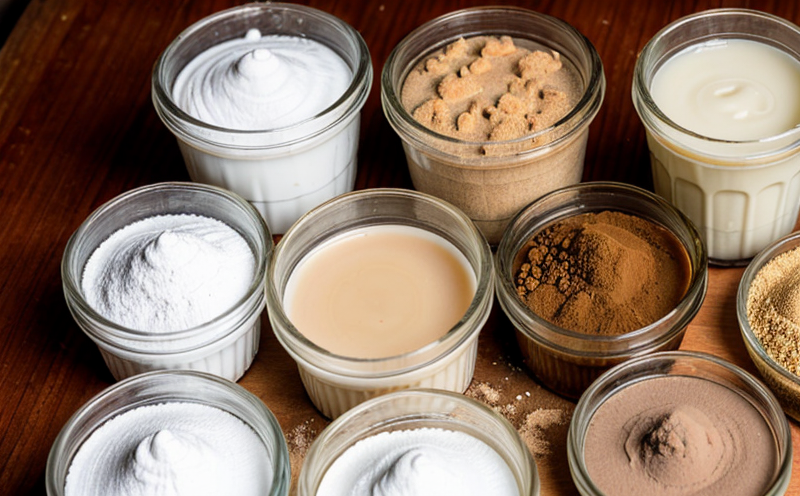FDA BAM Chapter 20 Identification of Molds in Processed Foods
The FDA Bacteriological Analytical Manual (BAM) Chapter 20 is a comprehensive guide for the identification of molds in processed foods. This chapter provides detailed procedures to accurately identify mold species that may be present, ensuring food safety and compliance with regulatory standards. The methodology described in Chapter 20 is widely recognized and utilized by laboratories around the world.
The process begins with the collection and preparation of samples from production lines or finished products. Samples are typically taken at various points during processing to ensure a representative sample set. Once collected, samples undergo preliminary examination to identify any visible mold growth. This step ensures that only suspect materials proceed further in the testing protocol.
After initial inspection, the samples are then prepared according to specific protocols detailed in Chapter 20. Preparation methods can include dilution, inoculation into appropriate media, and incubation under controlled conditions. The use of selective media helps differentiate between various mold species, enhancing the accuracy of subsequent identification steps.
The next step involves microscopic examination using light microscopy techniques. This allows for a detailed look at cellular structures such as hyphae and spores, which are characteristic features used to identify different mold species. Microscopy plays a crucial role in distinguishing closely related genera that might not be easily separable by other means.
Once identification is made via microscopy, confirmation through molecular techniques may also be employed if necessary. DNA-based methods like polymerase chain reaction (PCR) offer high specificity and sensitivity for identifying even trace amounts of molds within complex matrices. These advanced technologies provide robust evidence supporting the presence or absence of mold contamination in processed foods.
Testing conducted according to FDA BAM Chapter 20 is essential not only for ensuring product safety but also for maintaining consumer confidence. Regulatory bodies often require compliance with such standards as part of their ongoing monitoring programs aimed at preventing foodborne illness outbreaks caused by pathogenic fungi.
The results from these tests are typically reported comprehensively, detailing the types and quantities of mold species detected along with relevant information about their potential health implications. Such reports serve multiple purposes including internal quality control measures, supplier evaluations, and documentation for regulatory submissions when necessary.
- Comprehensive identification of mold species in processed foods
- Adherence to FDA Bacteriological Analytical Manual (BAM) Chapter 20 protocols
- Use of advanced microscopy techniques and molecular diagnostics where appropriate
- Thorough sampling and preparation procedures ensuring accurate results
- Detailed reporting including species counts and potential health risks assessment
This approach ensures that processed foods meet strict quality standards set forth by regulatory authorities like the FDA, thereby protecting public health.
Applied Standards
The FDA BAM Chapter 20 Identification of Molds in Processed Foods aligns closely with international guidelines provided by organizations such as ISO and AOAC International. These standards emphasize the importance of accurate mold identification to prevent contamination issues that could compromise food safety.
Specifically, FDA BAM Chapter 20 follows the principles outlined in ISO 11731:2008 which deals with the identification of molds using colony characteristics, as well as ISO 16295-1:2014 focusing on mold species detection by DNA techniques. Additionally, AOAC Official Method 997.23 provides supplementary guidance for quantification and enumeration of molds in food products.
By adhering to these rigorous standards, laboratories performing FDA BAM Chapter 20 testing ensure that their methods are both reliable and reproducible across different facilities and environments. This consistency is crucial when dealing with complex matrices like processed foods where slight variations can significantly affect outcomes.
Scope and Methodology
The scope of FDA BAM Chapter 20 encompasses the identification of molds in various types of processed food products. This includes but is not limited to canned goods, dried fruits, cereals, and snack foods among others. The focus here lies on ensuring that no mold species pose a threat to human health or alter the quality attributes of these items during storage and distribution.
The methodology involves several key steps starting with sampling procedures designed to capture representative samples from different parts of production lines or batches of finished products. Following this, initial visual inspections are carried out to detect any visible signs of mold growth on the surface or within containers.
Preparation of these samples follows strict protocols laid down in FDA BAM Chapter 20 which may involve dilution of larger quantities into smaller volumes suitable for further analysis. After preparation, samples are plated onto specialized media formulated specifically for cultivating various molds found in processed foods.
Incubation periods vary depending on the type of mold being sought but generally range from a few days up to two weeks or more based on temperature conditions maintained throughout incubation stages. During this time, colonies grow allowing for detailed examination under microscopes equipped with appropriate lighting systems capable of highlighting microscopic features unique to each species.
Identification is done through visual inspection of colony characteristics such as color, texture, and other morphological traits combined with molecular analyses when needed. This dual approach ensures accurate identification even among closely related genera that might otherwise be difficult to differentiate using traditional methods alone.
Why Choose This Test
- Comprehensive identification of mold species in processed foods
- Adherence to FDA BAM Chapter 20 protocols ensuring reliability and reproducibility
- Use of advanced microscopy techniques and molecular diagnostics where appropriate enhancing accuracy
- Thorough sampling and preparation procedures guaranteeing precise results
- Detailed reporting including species counts and potential health risks assessment aiding in informed decision-making
- Compliance with international standards providing credibility and trustworthiness
- Supports regulatory submissions ensuring compliance with legal requirements
- Ensures product safety and maintains consumer confidence protecting public health
Selecting FDA BAM Chapter 20 testing for mold identification offers numerous advantages. Not only does it provide peace of mind regarding the quality and safety of your products, but it also helps maintain a positive reputation among consumers who expect consistently high standards from their favorite brands.





